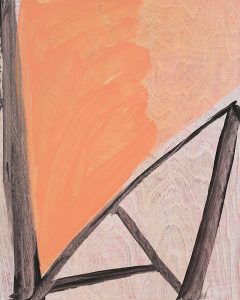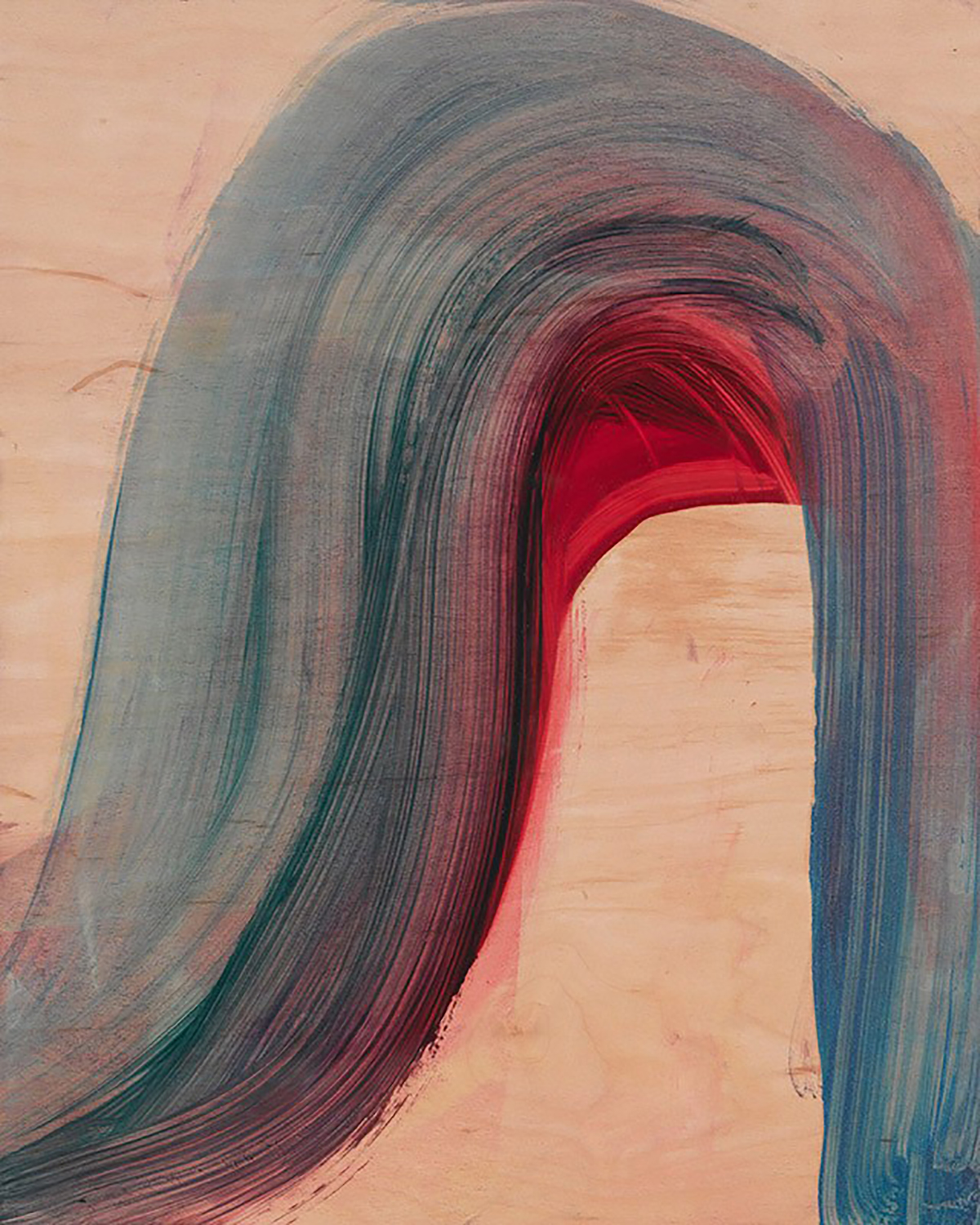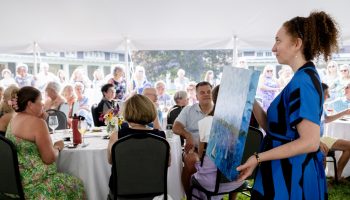For Andrea Belag, the work of an artist is never done.
“It’s a continuum. The desire to do new work is ongoing,” Belag said. “I’ll have to do another six drawings until something is all of a sudden new and worthy of beginning a painting. And then the painting changes again, because you never really know what you’re doing.”

oil on wood
20″ x 16″
2016
The abstract painter, who is teaching at the School of Art and will be speaking at 7 p.m. Friday at Hultquist Center as part of the Visual Arts at Chautauqua Institution lecture series, said sometimes creating artwork can start out as an impromptu impulse. Often, Belag said, she goes through a stack of her drawings, watercolors and photographs and picks up past work that she wants to improve on and change.
Besides revisiting her old work, Belag’s artistic inspirations range from film to photography to passages in other paintings. During the lecture, she said she will talk about her first painting and how it started from taking a scene in the film “Zabriskie Point” by Italian director Michelangelo Antonioni. To this day, Belag said, she sometimes watches movies and uses a photograph of a scene to use as the beginning of a drawing, which will then lead into a painting.
More recently, Belag said her visit to the Petrified Forest National Park in Arizona this year inspired her to work more with wood to make prints and paintings. Belag said the way light comes through the wood conveys a softer palette than how it looks moving through a white surface, such as linen. However, she said this more recent work still explores the relationship between light, color and space that is characteristic of her linen paintings.
This recent work with wood is a complement to the project she is currently working on for the Metropolitan Transportation Authority in New York City, Belag said. Whereas the wood paintings and prints are small, Belag’s murals are larger and span 4 feet by 12 feet and will appear in train stations in the city. Although the work is still abstract, Belag said she thought especially about the diversity of people and languages for this specific project, which will be installed next summer.

Along with working with wood and linen, Belag said she has also used a variety of materials and techniques such as cut canvas, house paint, and large knives and brushes. In many ways, Belag said, those different methods came about organically as solutions to creative roadblocks she experienced.
“For a while, I lived in Hoboken, [New Jersey] and there were no art supply stores there so I had to get paint from the hardware store. … I had a foot injury, I fell off a ladder, and then I couldn’t climb anymore so I started putting my paintings horizontally,” Belag said. “So things like that are necessitated by your circumstances. … Your work changes as you change and your life changes.”
Similarly, the artists that have inspired her work have also changed as her interests developed. During the talk, Belag said she will discuss her current influences such as the German painter Katharina Grosse, who uses spray paint, and the work of late artists Bill Traylor and Hans Hartung.
“You need things to jumpstart you,” Belag said. “Sometimes you exhaust a resource for that time. It’s like exhausting red. You need to take time off from red, so you go to blue.”
Even though she constantly finds new inspirations and materials to work with, Belag said she likes going back and revisiting work to garner new ideas. Just by preparing for her lecture, Belag said, she looked at past artwork that she wants to re-examine again.
“A lot of my ideas that I’m working with now came out the process of doing a studio inventory and I looked at a lot of my older work and I thought, ‘Well, why don’t I go on that road again and see what happens?’ ” Belag said. “So it is interesting to look at different times that you put together, either a slideshow, a JPEG or PowerPoint. It’s a way for you to take stock of what you’ve done and gives you information you think that may be exhausted but maybe that’s interesting.”





